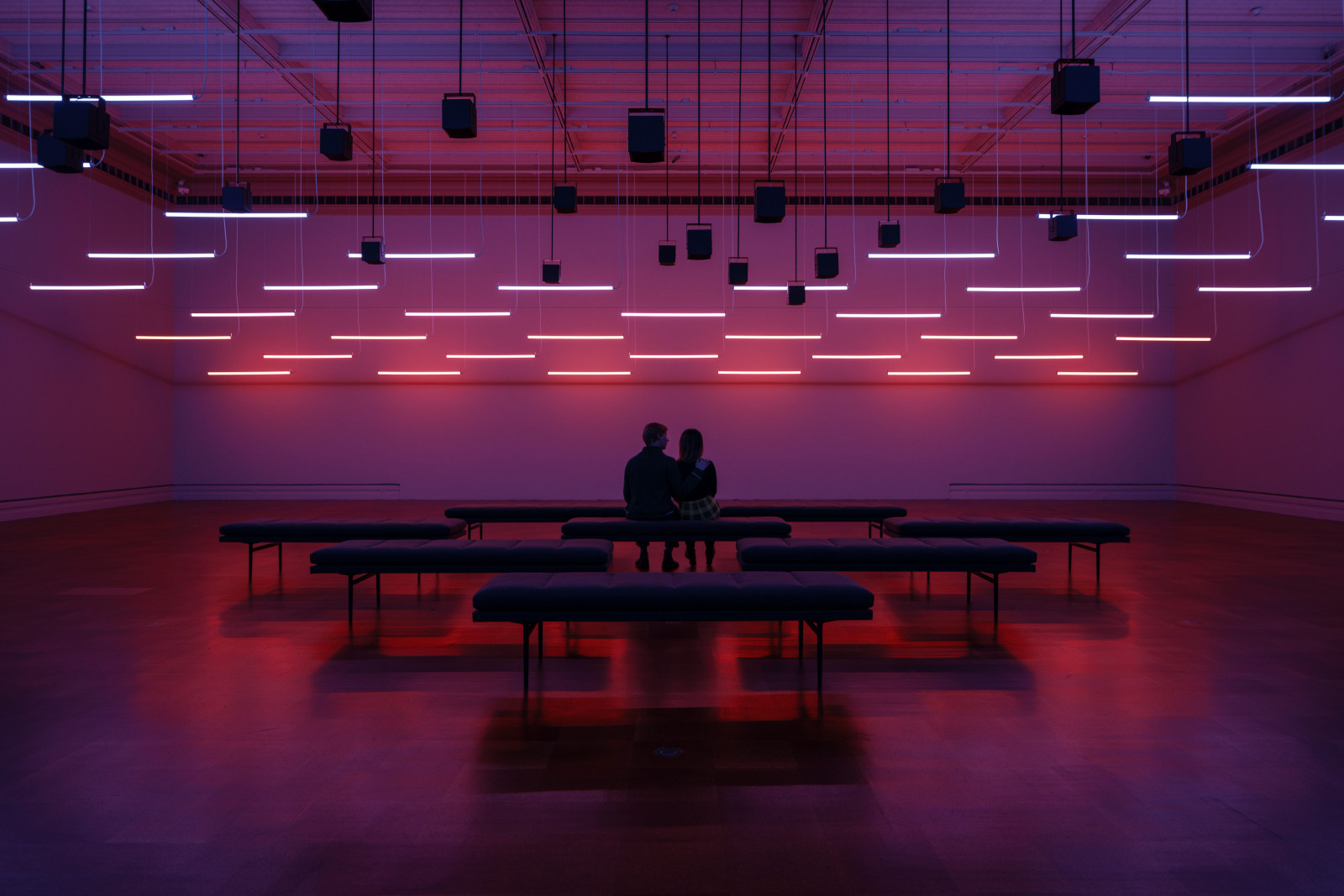Exglas (Inverted Glass)
Exglas (Inverted Glass)
Artist(Decorator)
Hilda Jesser
(Austrian, 1894 - 1985)
Designer
Josef Hoffmann
(Austrian, 1870-1956)
Manufacturer
Ludwig Moser & Söhne
(Czechoslovakia (Carlsbad))
Dateabout 1919
DimensionsH: 10 in. (25.4 cm); Rim Diam: 2 7/8 in. (7.3 cm)
MediumGlass; blown, tooled, polished, and painted.
ClassificationGlass
Credit LinePurchased with funds from the Libbey Endowment, Gift of Edward Drummond Libbey
Object number
2004.52
Not on View
DescriptionConical beaker, blown of colorless glass, its base tooled to form a ball finial. The rim is ground and polished. The flute's body is painted with a pattern of thin, intersecting curved bands in black and red enamel forming trapezoidal fields. These bands emanate from the finial base that is painted with opaque purple enamel and extend to the rim. Gilded stars and painted floral sprays are scattered between the ribbons near the rim. Octagonal stars, placed on opposite sides of the bowl, serve as bases for opposing pairs of figures resembling Harlequin and Columbine. The figures, which are holding floral sprays or drinking glasses, are painted in opaque white enamel with black details.
Label TextThe name “Exglas” refers to the X-shaped form of this glass, which can only rest on a surface once the liquid it holds is consumed. The crossing ribbons of the decoration are also a play on the X shape. The designer Hilda Jesser (Austrian, 1894–1985) was said to exemplify the “Wiener Werkstätte [Vienna Workshops] craftswoman” because she worked in many media, including ceramics, commercial graphics, glass, embroidery, and metalwork. The flute reflects the stylistic shift of the Vienna Workshops after the First World War to more exuberant form and decoration.Published ReferencesWiener Werkstätte Order Book (Model book), Wiener Werkstätte Archives, Museum für Angewandte Kunst (MAK) Vienna, p. 62, ill. 847 (drawing of glass).
Wiener Werkstätte Photograph Album, Wiener Werkstätte Archives, MAK , Vienna, p. 81, pl. 90.
Bröhan, Torsten (ed.), Glaskunst der Moderne: Von Josef Hoffmann bis Wilhelm Wagenfeld, Munich: Klinkhardt & Biermann, 1992, p. 138, ill. 49.
Brunhammer, Yvonne, Arts Décoratifs des Annees 20, Paris: Editions du Seuils, Editions du Regard, 1991, p. 312.
Neuwirth, Waltraut, Wiener Werkstätte: Avantgarde, Art Deco, Industrial Design, Vienna, 1984, p. 165, 124.
Archive of the Wiener Werkstätte, Museum for Applied Arts Vienna, original photograph no. WWF 90-81-7.
Exhibition HistoryToledo Museum of Art, New Acquisitions in Glass, Oct. 8 - Dec. 26, 2004.1750-1800
20th century
1860-1890
13th century
13th century
1750-1800
Pierre Delabarre
Glass: before 1630; Mount: c. 1630; Case: c. 1700

Membership
Become a TMA member today
Support TMA
Help support the TMA mission













